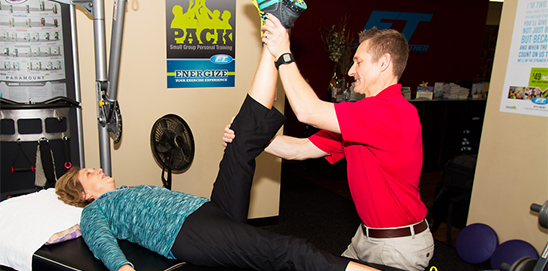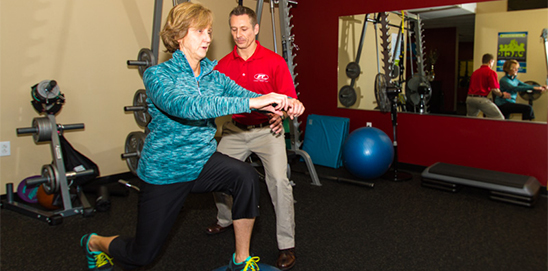In 2006, San Diego Sports Physical Therapy’s owner Greg Sterner completed a year long continuing education course with Joe Godges PT, DPT, OCS, focusing on advance manual therapy skills. In 2007 he received his OCS and became board certified in Orthopedics by the American Physical Therapy Association.He now utilizes this advanced training in hands on therapy to improve patient’s success rate and get faster results.
Wikipedia states that ‘Manual therapy may be defined differently (according to the profession describing it for legal purposes) to state what is permitted within a practitioners scope of practice. Within the physical therapy profession, manual therapy is defined as a clinical approach utilizing skilled, specific hands-on techniques, including but not limited to manipulation/mobilization, used by the physical therapist to diagnose and treat soft tissues and joint structures for the purpose of modulating pain; increasing range of motion (ROM); reducing or eliminating soft tissue inflammation; inducing relaxation; improving contractile and non-contractile tissue repair, extensibility, and/or stability; facilitating movement; and improving function.’
Alternatively, Korr (1978) described manual therapy as the “Application of an accurately determined and specifically directed manual force to the body, in order to improve mobility in areas that are restricted; in joints, in connective tissues or in skeletal muscles.”
Active Isolated Stretching
Is just one type of manual therapy we employ at San Diego Sports Physical Therapy to get outstanding results from Seniors to high level athletes. This type of stretching will yield increased range of motion and improved vascularity. Please read below to understand how this type of stretching is different than normal static stretching or PNF techniques.
Stretching for Performance
What is power? Force x Distance= Power. More appropriately Force (strength) x Distance (range of motion or flexibility) ÷ Time (speed) = Power. Thus, the more powerful an athlete becomes, the better one can perform athletic skills.
The four components an athlete can modify to increase power are: flexibility, speed, coordination and strength. Aaron Mattes, a highly respected Registered Kinesiotherapist (R.K.T.) and Licensed Massage Therapist (L.M.T.), created Active Isolated Stretching to improve flexibility, coordination, and posture. Active Isolated Stretching is based upon contracting an agonist muscle opposite that of an antagonist muscle that is lengthening, thus incorporating reflex inhibition to its fullest extent. Many so called “stretching experts” have long promoted a prolonged stretch up to 60 seconds, but any static stretch held greater than five seconds will in fact decrease blood flow within the tissue, which will create lactic acid accumulation and local ischemia.
The stretch reflex or myotatic reflex attempts to resist a change in muscle length by causing the stretched muscle to contract. This stretch reflex is especially active after the initial two seconds of a performed stretch. This becomes the rationale for performing stretches for only 1.5 to 2.0 seconds. The protective stretch reflex and subsequent reciprocal antagonistic muscle contraction are less active when a gentle stretch of less than five seconds is performed. Golgi tendon organs are a type of proprioceptor located in the tendon near the end of the muscle fiber. These organs along with muscle spindles act as a defensive mechanism to protect a muscle from over stretch or trauma.
As an agonist muscle contracts, its antagonist muscle is forced to relax. If this would not occur, motion about a joint would be impossible. This neuromuscular reaction is called reciprocal inhibition. Subsequent and substantial gains can be made in flexibility, thus increasing range of motion about a joint, when reciprocal inhibition can be utilized. One example using reciprocal inhibition is stretching of the hamstring muscles while lying supine and significantly contracting the quadriceps muscle of the same leg while performing a straight leg raise.
Active Isolated Stretching can be performed individually with the use of a stretch strap to passively assist the range of motion when full the barrier of active range of motion is met. Assisted stretching, performed by a certified Active Isolated Stretching therapist, can also be used to maximize results. Remember, a muscle can lengthen up to 1.6 times its resting length, but at the same time it can also tear at any length greater than this. So, use only mild assistance or overpressure at the end of an athlete’s active range of motion. Other factors that will make Active Isolated Stretching more effective are using numerous repetitions (typically 10 to 20 reps) and performing regular breathing (exhaling on the stretch) during flexibility sessions.
Active Isolated Stretching is a results and performance based flexibility program. It is a dynamic rather that passive stretching system that will pump blood, oxygen, and nutrients into fascia. Recent studies and authorities on sports rehabilitation believe flexibility is the most significant variable in determining athletic durability/longevity and is invaluable in preventing and rehabilitating musculoskeletal injuries.






